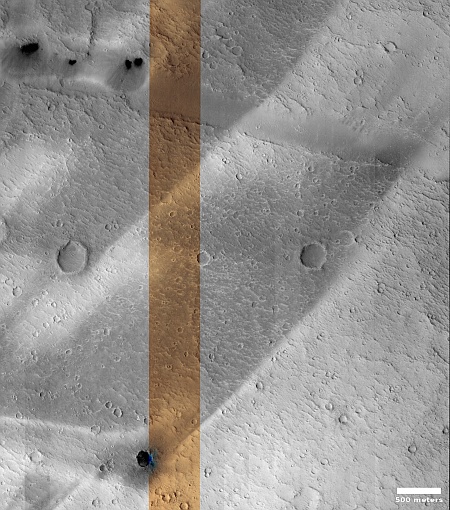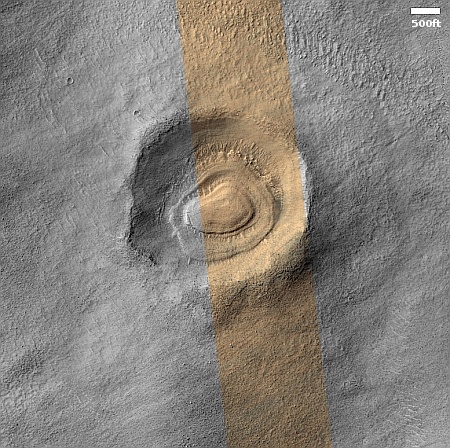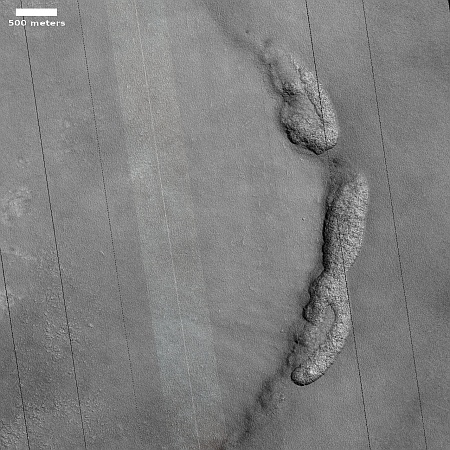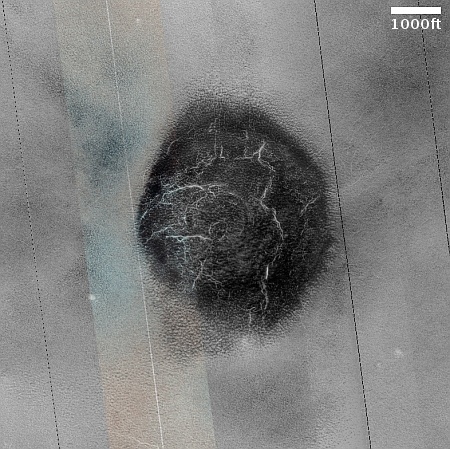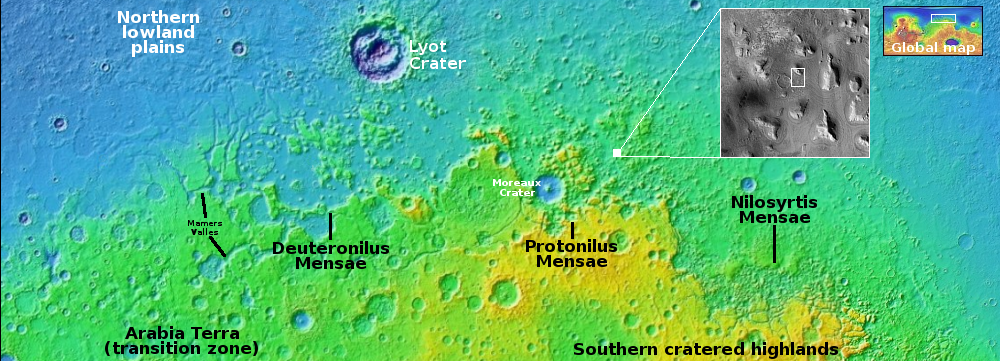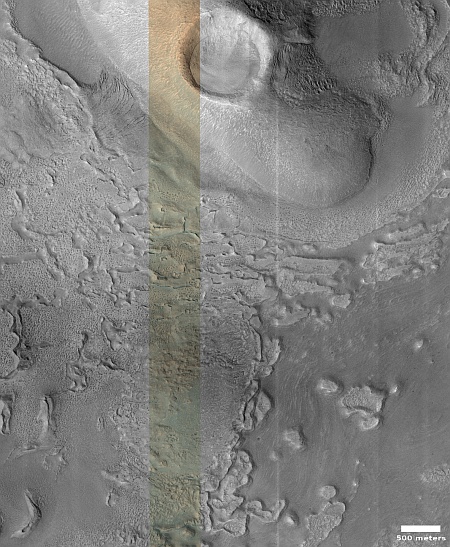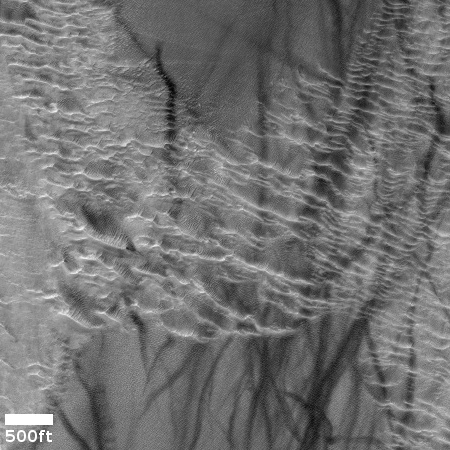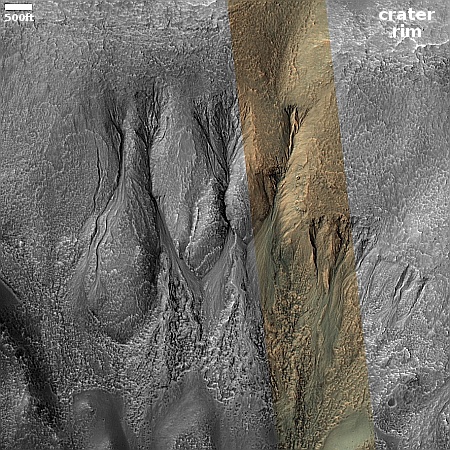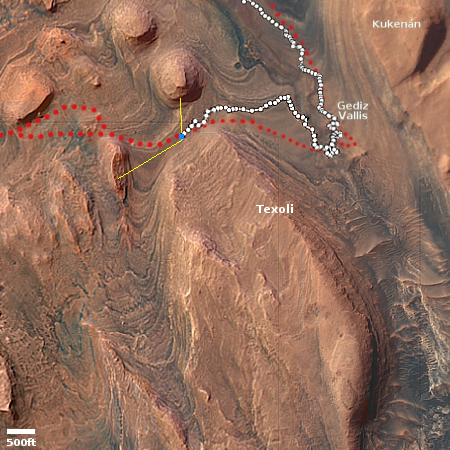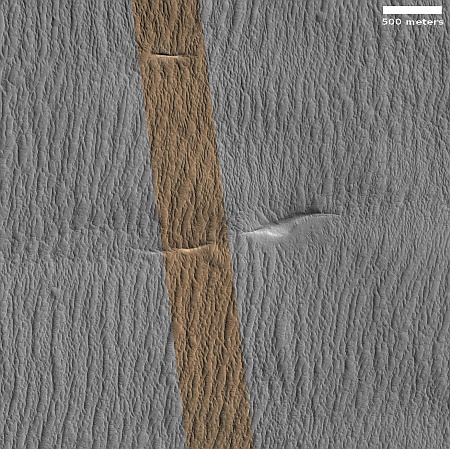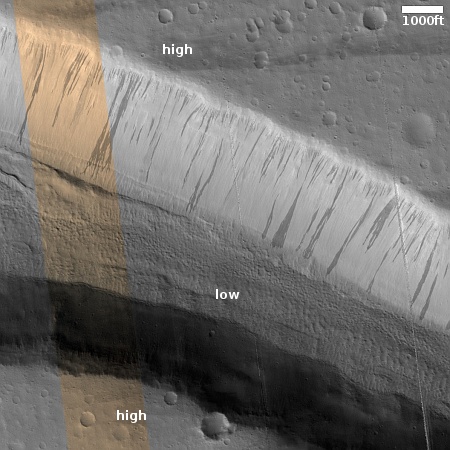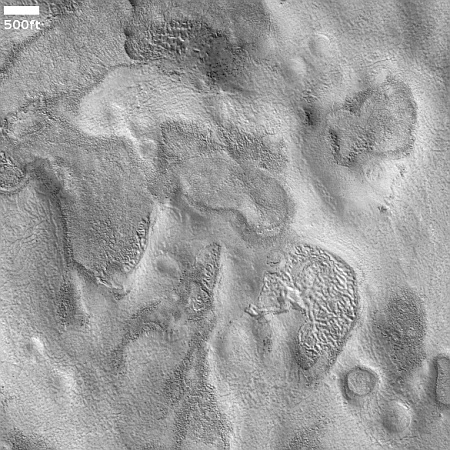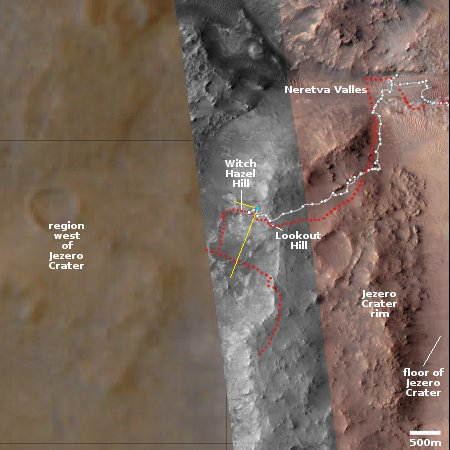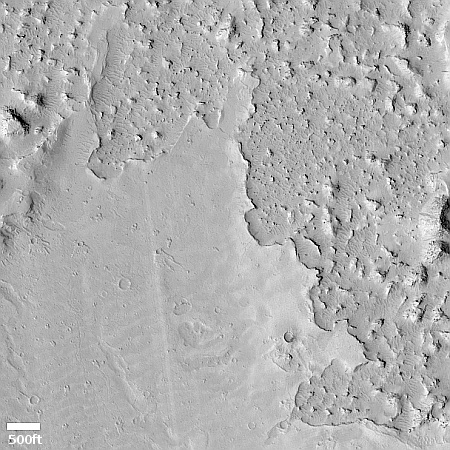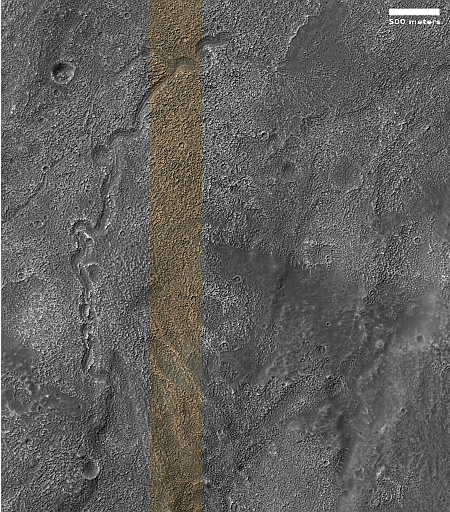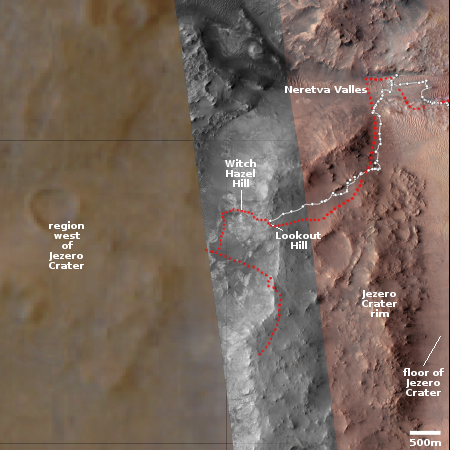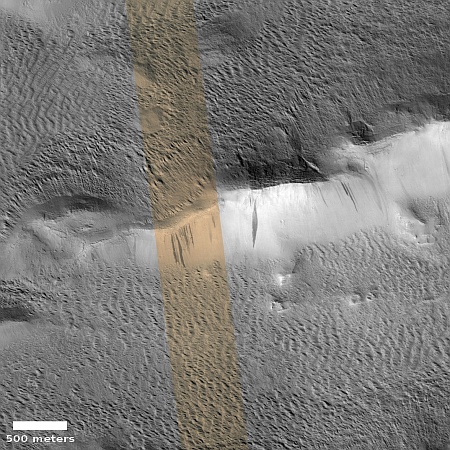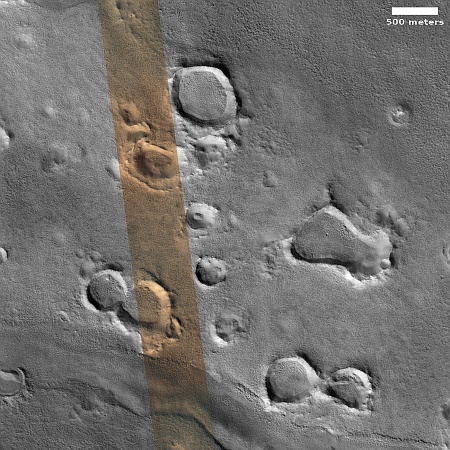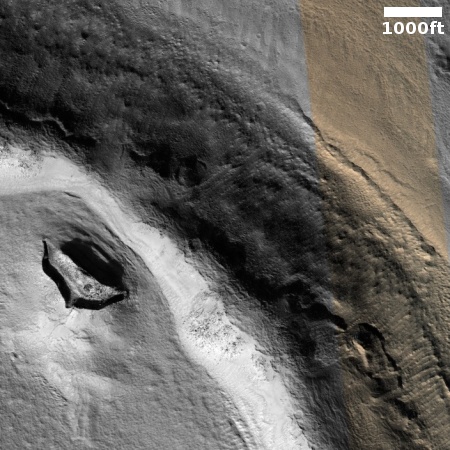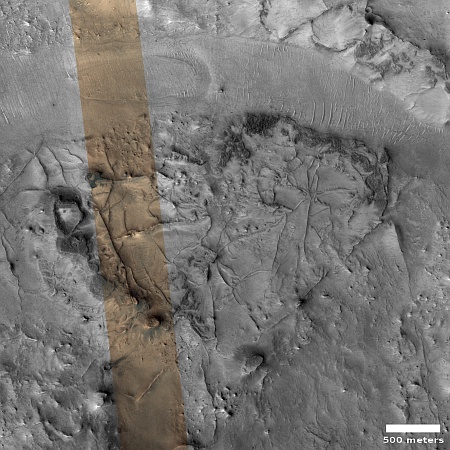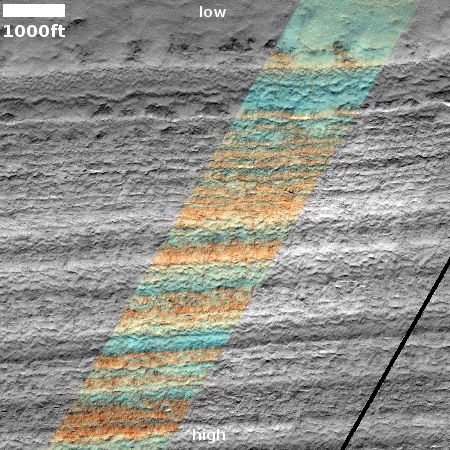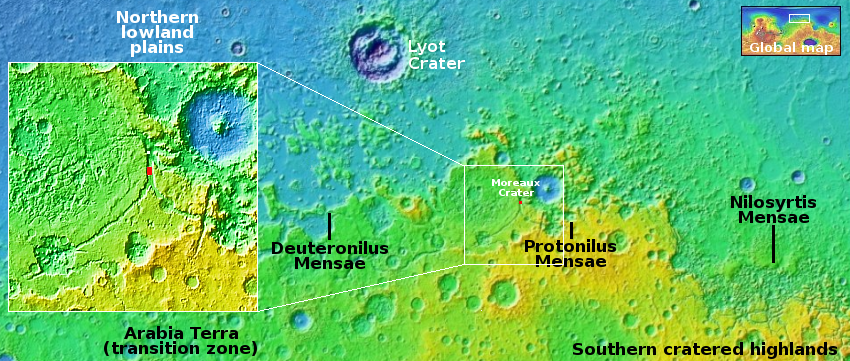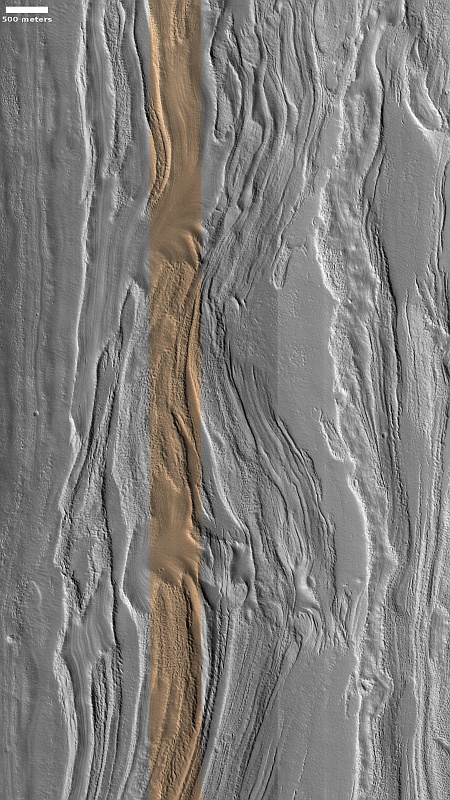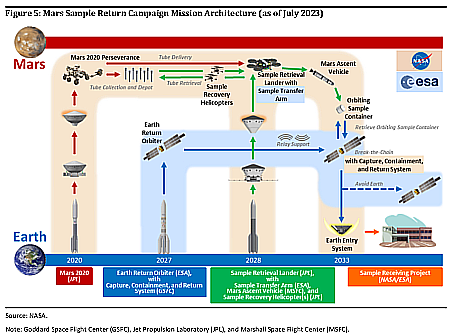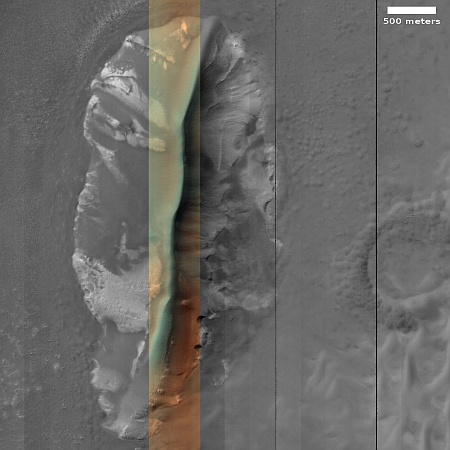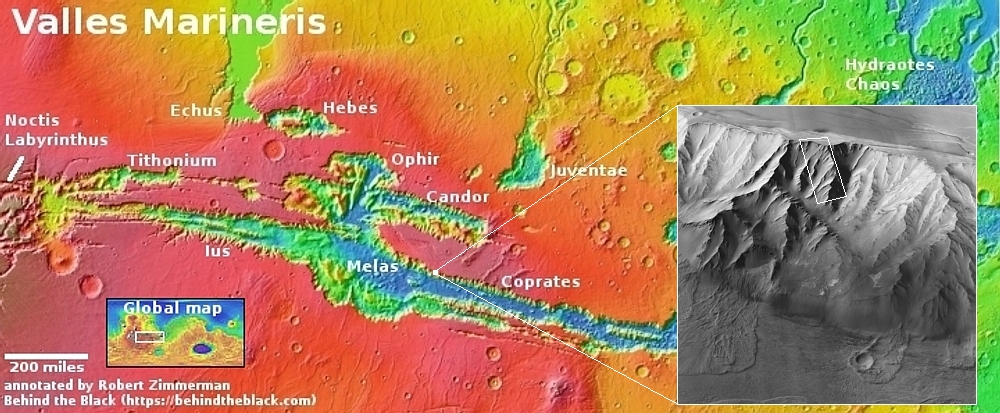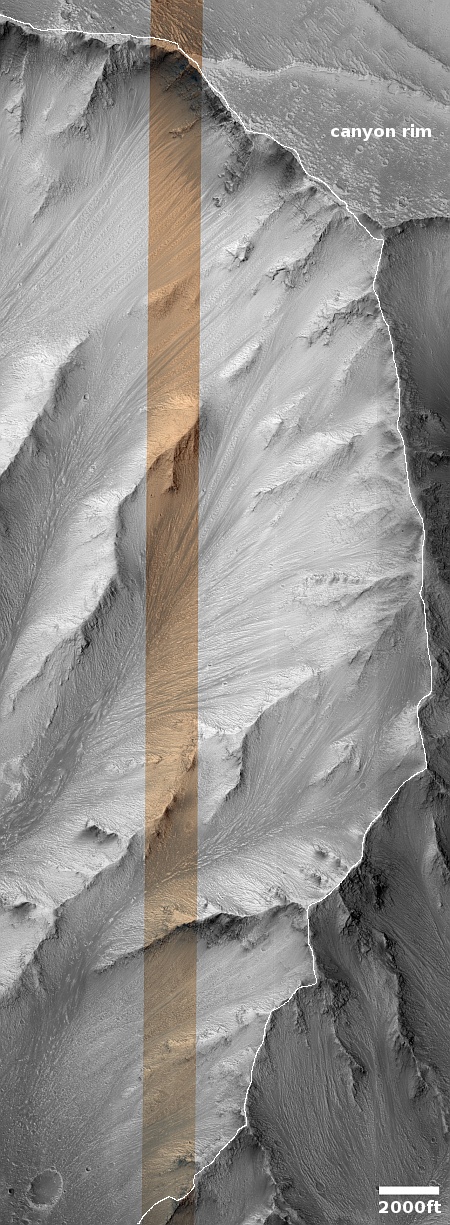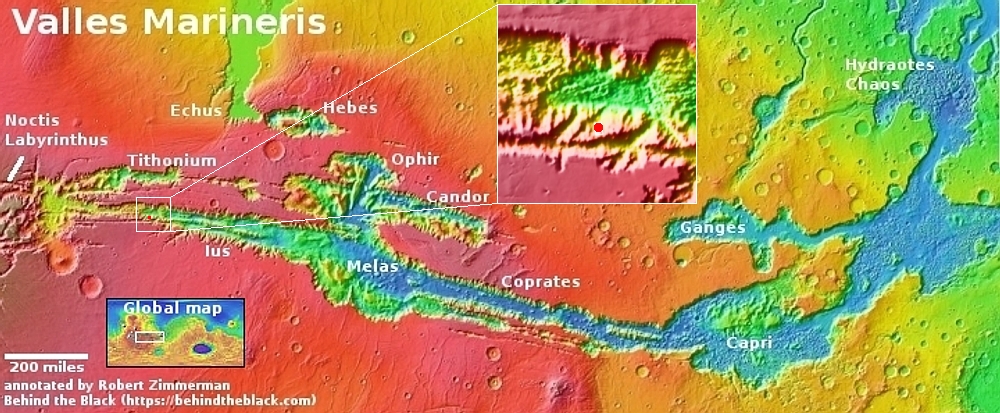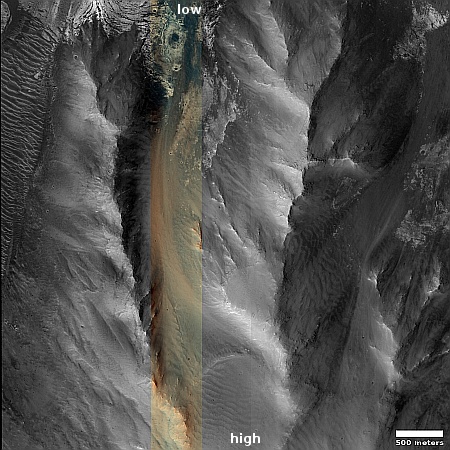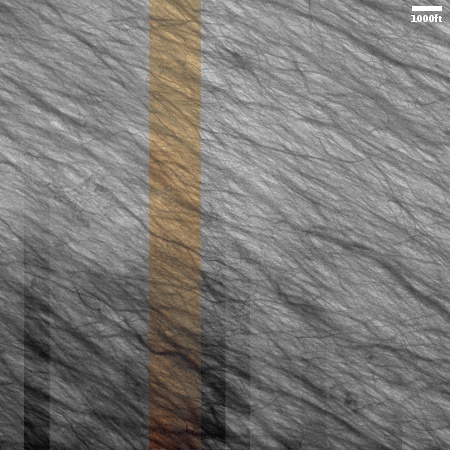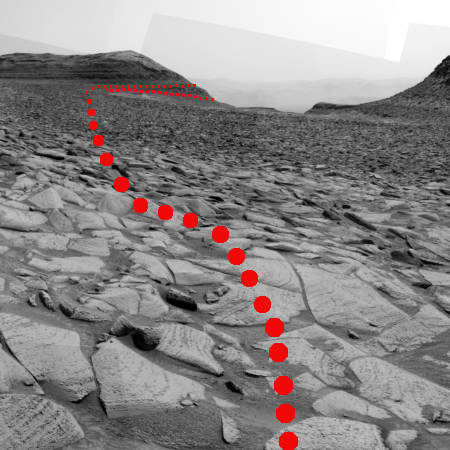Another “What the heck?” image on Mars, this time a mystery on both small and large scales
Cool image time! The picture to the right, rotated, cropped, reduced, and sharpened to post here, was taken on October 21, 2024 by the high resolution camera on Mars Reconnaissance Orbiter (MRO). Labeled simply as a “terrain sample,” it was likely taken not as part of any specific research project but to fill a gap in the schedule in order to maintain the camera’s proper temperature.
In this case however the camera team picked this spot probably to satisfy their own curiosity. This same location was photographed by MRO back in July 2022, and they were likely wondering if the streaks coming off these dark spots had changed at all in the subsequent years.
As far as I can tell, there has been no significant change, though the highest resolution versions of these images might show more.
The geology in the picture itself is very puzzling. At first glance the dark streaks appear to have been caused by wind blowing the dust from the dark spots. At second glance this doesn’t work, as large dark areas do not appear to be linked to those dark spots.
What is going on here?
» Read more
Cool image time! The picture to the right, rotated, cropped, reduced, and sharpened to post here, was taken on October 21, 2024 by the high resolution camera on Mars Reconnaissance Orbiter (MRO). Labeled simply as a “terrain sample,” it was likely taken not as part of any specific research project but to fill a gap in the schedule in order to maintain the camera’s proper temperature.
In this case however the camera team picked this spot probably to satisfy their own curiosity. This same location was photographed by MRO back in July 2022, and they were likely wondering if the streaks coming off these dark spots had changed at all in the subsequent years.
As far as I can tell, there has been no significant change, though the highest resolution versions of these images might show more.
The geology in the picture itself is very puzzling. At first glance the dark streaks appear to have been caused by wind blowing the dust from the dark spots. At second glance this doesn’t work, as large dark areas do not appear to be linked to those dark spots.
What is going on here?
» Read more

